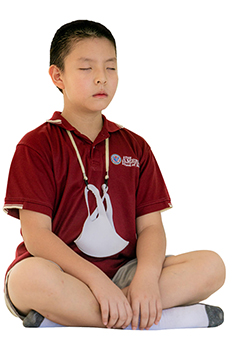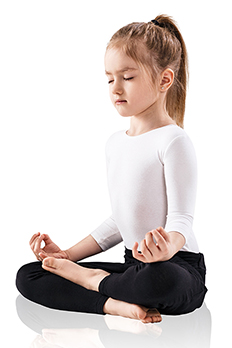Here are commonly asked questions regarding mindfulness in education:
1.How can teachers implement mindfulness to help their students?
First, choose a consistent practice for yourself. Following this, set a personal goal of what you want to achieve, select a mindful technique that suits you, and practice your technique consistently. As time passes you will experience a positive transformation in yourself. This will enable you to use the skills you have learned to help your students and assist your colleagues.
2.How can I use mindfulness for self-improvement?
There is an abundance of research that proves the effectiveness of mindfulness. Practicing mindfulness helps reduce stress, increases one’s attention span, strengthens the immune system, and improves overall health. If you would like to improve in a specific area, there are specific specific techniques that can used. Feel free to contact us with any detailed requests at [email protected]. Remember that Thailand is the center of mindful practice. There are many gifted mindful practitioners in the country who we often consult for advice.
3.It’s difficult for me to focus on one task or thought and my mind runs in circles. When I try reading a book or doing a task I enjoy, I cannot overcome monkey mind. Please introduce me to the concept of mindfulness and how I can use it to improve this condition.
Start by practicing simple breathing for 5 minutes a day, either when you wake up or before you go to sleep. It’s your choice. Pay attention to your in-breath and out-breath. Be patient. Thoughts may creep into your head, but with time, and constant practice, you will begin to see thoughts subside naturally and you will start to enjoy the beauty of calmness and relaxation through breathing. Statistics show that change will be prominent with consistent breathing practice between 7 to 21 days.
4.Mindful practices are new to me and I’m excited to learn more about it. What can I do?
That’s great! Just let your curiosity carry you and start experimenting with mindfulness techniques that appeal to you.
5. One of the reasons I am / was excited about ASB was the mindfulness aspect of the curriculum.
That is wonderful to know because we see it is as a major part of our school identity moving forward.
6.I’ve never done mindfulness with my students, but I completed a 200 hour yoga teacher training. I’m hoping to incorporate yoga into our mindfulness practice. Would this be okay?
Yes, we would strongly encourage you teach what you have learned about yoga to our students.
7.To be honest, I don’t know much about mindfulness. My guess is that it is just about being in tune to your thoughts and being aware. Is that true?
That is correct in many respects. Being aware of your thoughts and being aware is a giant first step and a very important one. However, applying this awareness to your life with mindful intentions is the next step but this takes great discipline.
8.Why choose mindfulness as opposed to teaching respect, character, integrity, etc.?
The primary reason is because mindfulness, when practiced correctly, holds the key to internal transformation so it teaches the essence of respect, character, integrity and so forth. Most anti-bullying and character building programs just talk about these concepts but mindfulness actually builds the persona that embraces these qualities.
It’s important to remember that there are different forms of mental training in mindfulness. For example, there is emotional intelligence training where individuals must be aware of their emotions and practice regulation techniques. There is also training for concentration and focus that involves breathing. Visualization training is also another technique that is commonly taught in professional sports.
9.I need a basic introduction because I have not heard of this way of thinking.
As the school year progresses, you will be hearing more about mindfulness and will be offered opportunities to learn more about it. As mentioned, one of the best ways to learn about mindfulness is to experience it so don’t be shy about joining one of our meditation sessions here at school. If you ever have any questions, you can always contact our team at [email protected]
10.I am not too familiar with mindfulness and I’m wondering how I can still incorporate it into my daily lessons.
Before trying to implement mindfulness in your classroom, it is best to experience what it means first. It would be kind of like trying to teach chemistry before understanding it so start experimenting with mindfulness yourself, then consider trying it out in class.
11.To what extent can we use mindfulness practice in the classroom at ASB?
Our teachers who have had training at ASB and other places use different styles of mindfulness techniques. Some start the class with a two-minute breathing exercise while others use gonoodle.com (a neat website that contains lots of fun mindfulness activities with soothing graphics and music). Other teachers use a total relaxation technique. We encourage all of you to invite Jeremy, our mindful specialist into your classroom to help integrate mindfulness into your lessons.
12.How can mindful meditation be explained to the little ones in Grade 1 or Grade 2?
With this age group, we use TAKE 5, meaning take 5 breaths before starting an activity.
13.I am really interested about “mindfulness” and I would like to know how to introduce it to kids using physical activity.
For younger kids, Simon Says and Musical Chairs both work well because they involve movement and mindful listening. For the older students, we can provide formal training for sports. Please reach out to me when you want help in this area because mindfulness within movement is something I really enjoy teaching.
14.How can mindfulness help improve my teaching?
Research consistently shows that mindfulness helps students focus and pay attention so having well-behaved students will certainly help your classroom. Mindfulness has also been shown to increase one’s patience, and decrease hostility and reactivity (think of mindfulness as a training in being able to “respond” rather than “react”). As a teacher, it is important to be a positive role model for your children. Being able to remain calm and patient in the face of difficult classroom situations helps you to become a more effective teacher and leader. Additionally, mindfulness reduces stress, and it is easy to see how less stress will lead to an improvement in teaching!
15.How can I improve a specific aspect of my teaching with mindfulness?
If you share the details of your situation, then we can work on a specific techniques to help you. Please write an e-mail to [email protected].
16.Is mindfulness similar to yoga?
Whether mindfulness is similar to yoga ultimately it depends on your state of mind when practicing. In its purest form, yoga is about cultivating a positive relationship between the body and the mind. It is about learning to be aware of your present moment experience, as your body moves through each yoga pose. If yoga is done with mindful awareness of the movements, or with positive intentions, then it can be said to be mindful. This is true for all forms of movement, whether it is playing basketball, painting, doing the dishes, or even going for a walk. Each one of these activities is a great place to practice mindfulness. All you have to do is remain in the present moment, feeling the sensations of the movements as you do them. In this way, every activity in your life can become a place for positive transformation and increased sense of calm and well-being.
17.How do I maintain mindfulness when I am stuck in traffic for an hour?
Being stuck in traffic is actually a great time to focus on your breathing and listen to your thoughts. I have a friend who drives one hour to Bangkok every morning to work and that is when he practices mindfulness. He says it is his favorite time of the day. So anything is possible. So pay attention to your emotions, too. It can be a useful time to practice a technique called “mindful noting”. For instance, when stuck in traffic, you may note feelings a restlessness, or frustration, or a fear of being late. The key to this practice is to note the emotion (without judging the emotion) and pay attention to how that feels in your body. Does your chest get tight and constricted? Does you clench your fists? How are you breathing? When you mindfully note these feelings in the body, the negative sensations will often start to soften, and you can discover more peace and calm in the midst of being stuck in traffic.
18.Does mindfulness involve the practice of staying present?
Mindfulness practice has three core components: paying attention to the present moment, on purpose, and without judgement. Each aspect of this definition is important for correctly practicing mindfulness. If you are not staying in the present moment, it means you are either thinking about the past or the future. Often we use the breath as an anchor to guide us back to the present moment and help us stay there. If you are doing a mindfulness practice, and your mind begins to wander into the past or future, simply return your attention to the breath, as a way of coming back into your present moment experience.
19.Do I have to be a Buddhist to practice mindfulness?
No, you do not have a be a Buddhist to practice mindfulness. You have to be open and ready to learn.
20.I’m a parent, and I’d like to learn how to do it myself, can I join the sessions?
Yes. We offer courses to parents for free. Please check our school announcement periodically.
21.Are there any online resources for learning more?
You can look into the MBSR program, Mindup Curriculum, and d.B (for teenagers) and Paws B (for elementary children).
22.Are there apps that can get me started?
Yes. We encourage you to consult with a specialist before starting any apps as there are pros and cons to using apps.
23.What is SEL (Social Emotional Learning)?
Emotional Intelligence or Social and Emotional Learning (SEL) is introduced by Daniel Goleman, an internationally known psychologist who published the book, “Emotional Intelligence, Why It Can Matter More Than an IQ.” It is a concept that enhances learners to understand and regulate emotion to maximize performance. Research has shown that an individual with high EQ are likely to succeed in the workforce because he or she performs well under pressure, has good teamwork, and is skillful in conflict resolution. Learners of all ages experience various emotions, either pleasant, unpleasant, and neutral. By understanding our own emotions, we can learn techniques to not control, but regulate our emotions so that learning becomes easy and fun. If a child can identify that he is having a bad day, he or she can intentionally take a minute to do simple breathing exercise, before redirecting his or her focus onto the next topic.
Participants will be introduced to three steps of applying emotional intelligence in the classroom:
- Teach students to identify their emotions
- Understand the Theory of Colors and how it impacts learning
- Practice the basics of breathing for relaxation






